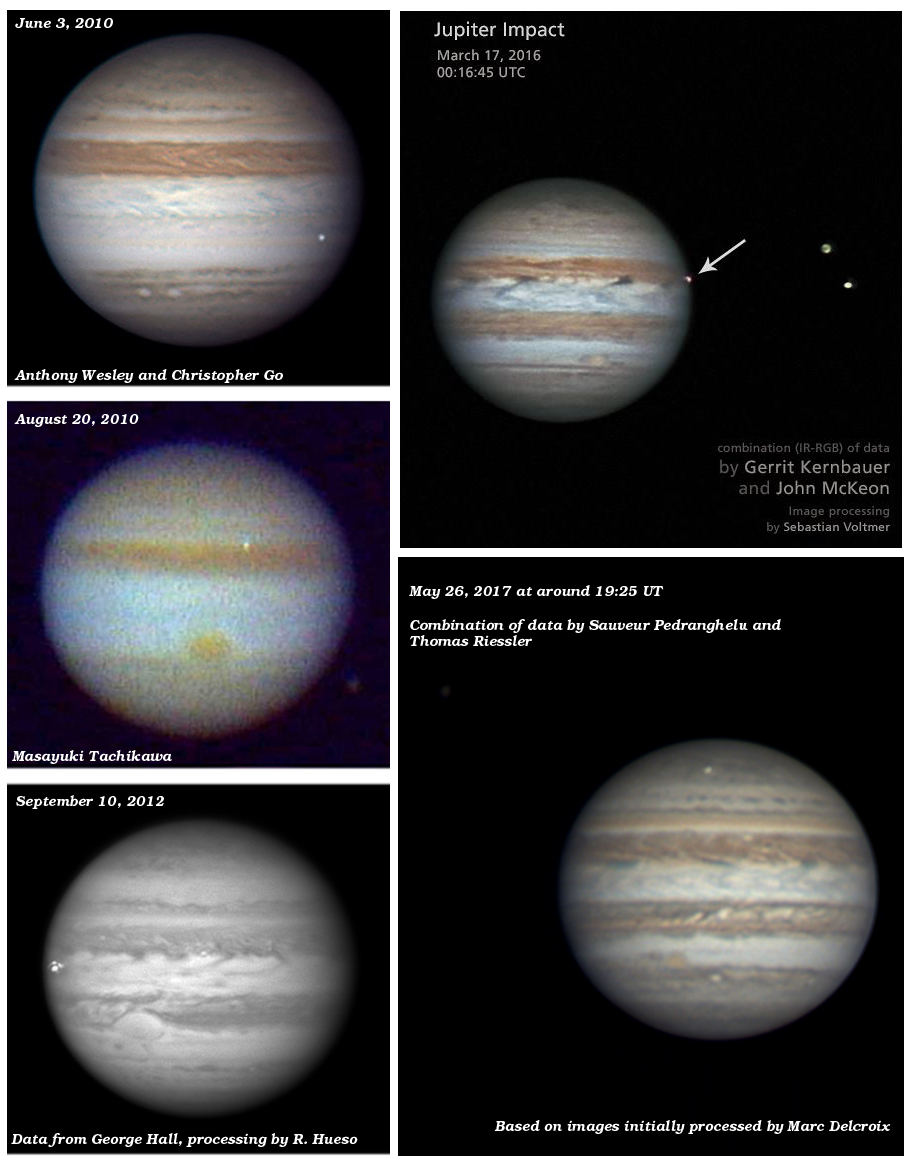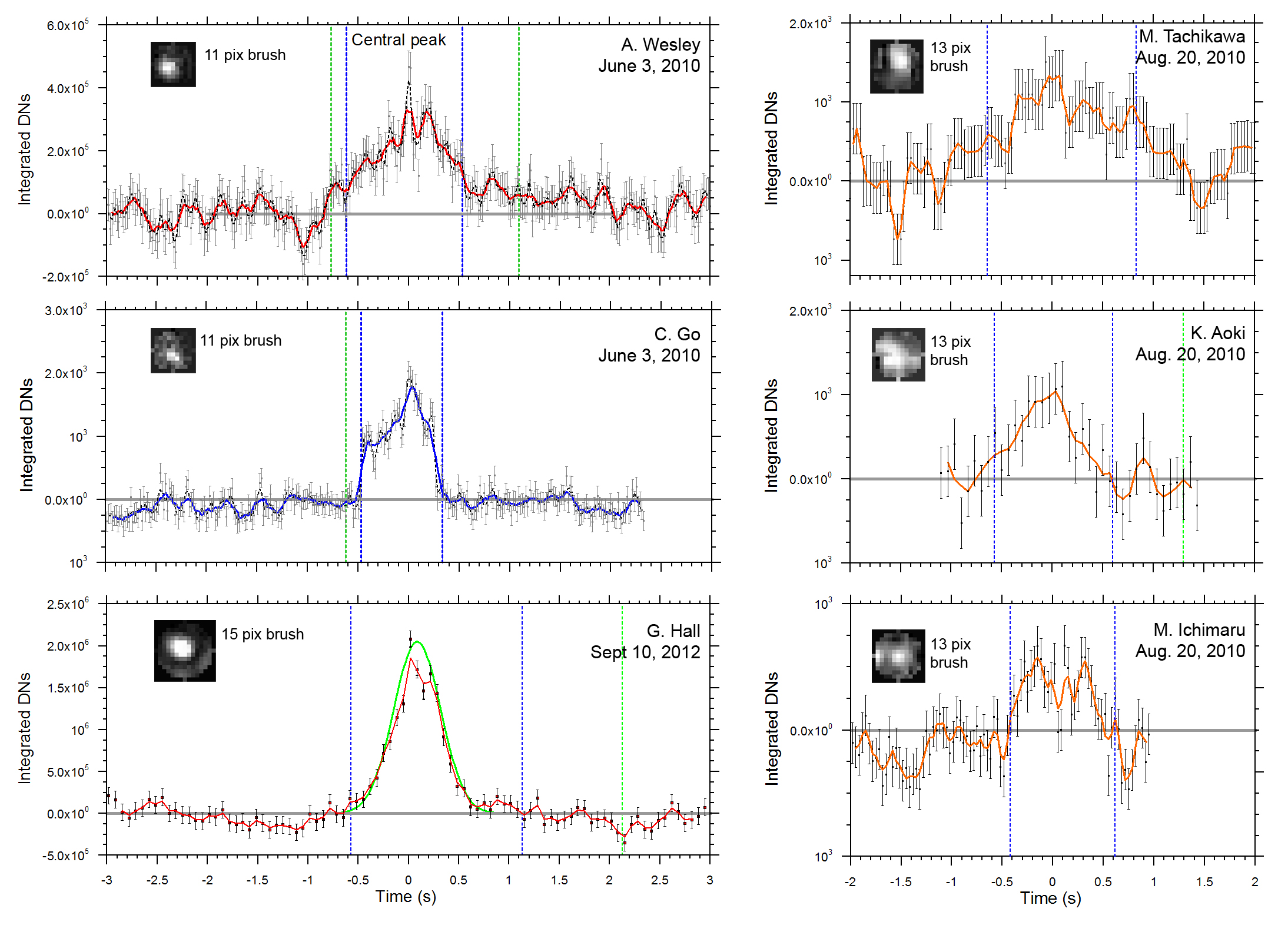
On June 3, 2010 amateur astronomers Anthony Wesley from Murrumbateman, Australia and Christopher Go from Cebu, Philippines recorded a short flash of light on Jupiter while taking video observations of Jupiter. The observed flash lasted about two seconds and a scientific analysis of its light resulted in the conclusion that it was caused by an object of 8-13 meters impacting on Jupiter's atmosphere and producing a giant fireball in a superbolide event. On August 20, 2010 another flash event was detected on Jupiter by amateur astronomer Masayuki Tachikawa from Japan and was later confirmed by japanese amateur astronomers Kazuo Aoki and Masayuki Ishimaru.
Two years later, on 10th September 2012 the history repeated with a new flashing impact in Jupiter first discovered by a visual observer (Dan Petersen from Racine in Wisconsin) and later confirmed by a video observation obtained by George Hall from Dallas, Texas. A new impact was detected by Gerrit Kernbauer in Austria and John McKeon in Ireland observing the planet on March 16, 2016 on the Eve of St. Patrick's Day. The latest impact was found by Sauveur Pedranghelu from Corsica in France on May 26, 2017, and later confirmed by two German observers, Thomas Riessler and Andre Fleckstein, after reading news of the impact posted on German astronomical forums by another observer (Dan Fischer).
In all these cases an observed raised the alarm to the amateur community after visually observing the impact flash on the video recording with later confirmations coming from observers who had been taking data at the right time but didn't see the flash when it produced. In all cases the regions suffering the impacts did not show any trace of the bolide material. These events can therefore only be discovered if spotted on the few seconds each impact produces a bright fireball observable from ground-based telescopes.
Images on the right show processed versions of video observations of the five flashes as processed by different people as identified in the picture. Click on the image for a higher resolution version.
Raw light-curves of the first three impacts in Jupiter.
Data from Hueso et al. (2013). Insets show a circular mask over the individual frame with the most intense signal from the flash and containing the impact area.

Analysis of the light-curves and size estimations. Image calibration results in estimates of the luminous energy released in the impacts and in a range of masses and possible sizes for the impacting objects.
